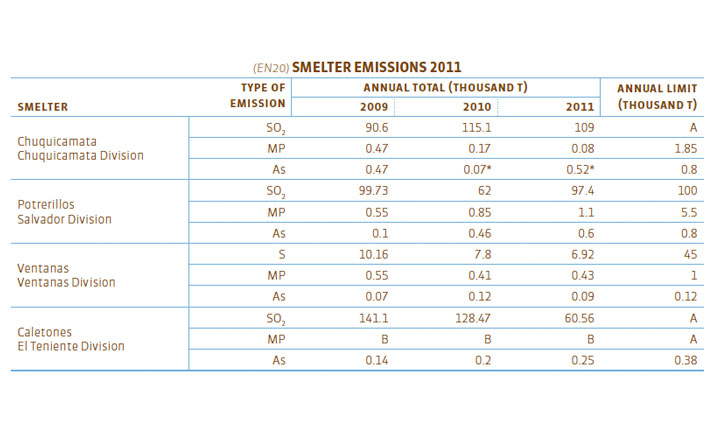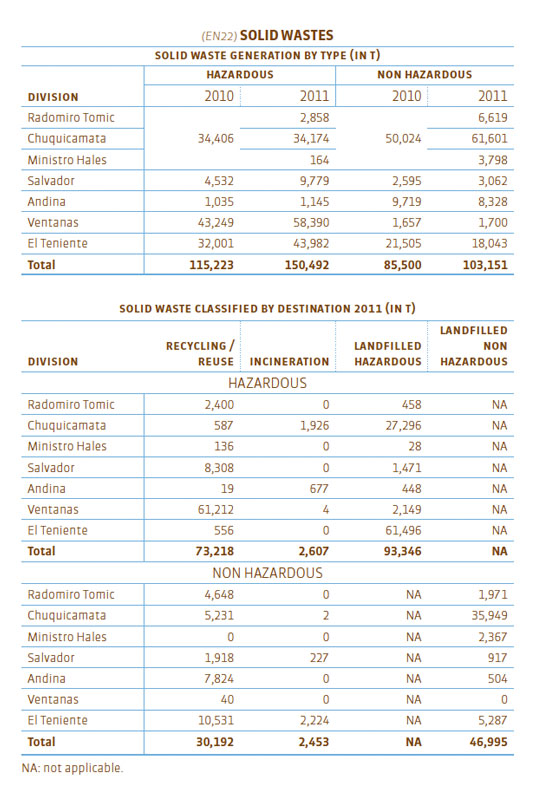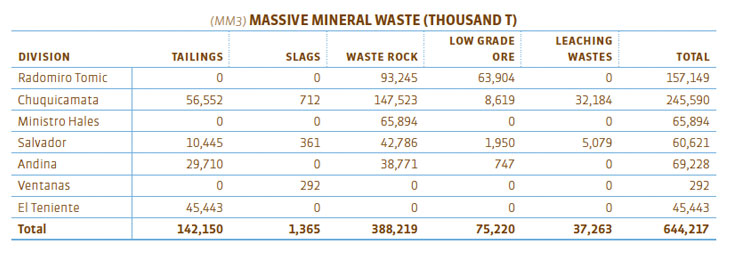Smelter emissions
We care about controlling air emissions, and reducing the risk of polluting the atmosphere along with its potential impacts on the population, water, soil, and biodiversity.
At Codelco, we have four copper concentrate smelters, which generate, mainly, sulfur dioxide emissions (SO2), arsenic (As), and particulate matter (PM). These emissions are measured at the chimney output point for PM, and by balance in the case of As and SO2, in order to monitor that they are within the allowed ranges. We emphasize that all our smelters comply with annual legal emission limits.

A - Compliance with air quality regulations measured in contaminant concentration, where both Chuquicamata as Caletones comply.
B - In 2003 the Caletones Smelter stopped measuring these emissions, but continued to comply with the quality regulations for particulate matter.
* - According to the amendments to the S.D. 165/MINSAL/08, implemented in 2010, variations in the methodology for estimating arsenic emissions are included.
Industrial waste
In mining, the generation of solid waste and its proper management is important in environmental matters, not only because of the nature of these (which can be hazardous or non hazardous), but because of the large volumes generated. Having suitable conditions for its final disposal is a challenge for companies in our area. Therefore, our management focuses on the reuse and recycling, and controlling the risks associated with the handling and disposal of hazardous waste.
Since 2011 we have a Corporate Guideline on Solid Waste Management, which establishes the guidelines and actions, for the Corporation as well as for external companies who manage its wastes, regarding waste minimization.

![]()
(EN24)
Weight of transported, imported, exported, or treated waste deemed hazardous under
the terms of the Basel Convention Annex I, II, III and VIII, and percentage oftransported
waste shipped internationally.
It is important to
highlight that all waste
generated is landfilled
(both hazardous and non
hazardous waste) or disposed
of through authorized
waste management
companies, which in the
case of hazardous waste
is recorded by the Reporting
and of Hazardous
Waste System (SIDREP)
of the Ministry of Health.
MASSIVE MINERAL WASTE
The challenge in managing massive mineral waste is finding innovative and creative solutions to encourage reuse and recycling, since they are characterized by its large volume and low risk to human health, if it is properly managed.

![]()
Slag Recycling
In order to become more efficient in our
productive process, during 2011 the
Chuquicamata, Salvador and El Teniente
Divisions reprocessed an important part
of their slag, which decreased waste generation
for this waste. In 2011, the total
amount of reprocessed slag reached 779
thousand tons.